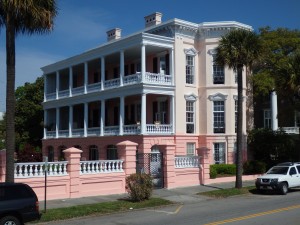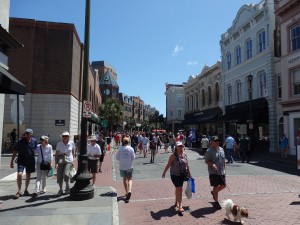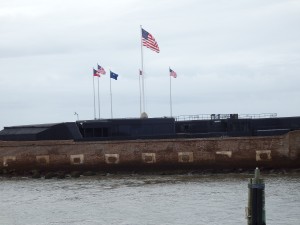Charleston, South Carolina
For those interested in the history of the American Civil War, there are a number of iconic places that just have to be visited. One of them is Fort Sumter, the place where the shooting part of the Civil War began on April 12, 1861.
Although I’d spent 20 years visiting Civil War battlefields, it wasn’t until 2010 that I made it to Fort Sumter. The delay was partly because it was tough to get there from here and partly because it was in South Carolina. I had never been to that state but the image I had wasn’t a particularly positive one. Four years ago I finally decided that I could tolerate a few days in Charleston if it meant setting foot inside Fort Sumter.
A funny thing happened during that trip: I fell in love with Charleston. When the opportunity arose to return there for a few days this spring, I seized the chance.
It’s easier to get to Charleston now. Several airlines (JetBlue, Delta) offer direct flights from Boston to the Charleston International Airport which is only a 20 minute cab ride away from the downtown historic district. Charleston is a peninsula wedged between two rivers, the Ashley and the Cooper. The historic district is at the tip of peninsula.
Civil War-wise, Charleston is most famous for the shelling and capture of Fort Sumter in April 1861 but Charleston suffered greatly through the rest of the war. The Union blockade closed the port and made scarce many of the essentials of life. The Confederate flag over Fort Sumter also stuck in the collective consciousness of the northern states and great efforts were expended to recapture the fort and punish the city. For example, the movie Glory, which recounts the heroism of the 54th Massachusetts Volunteer Infantry Regiment (composed of African American soldiers), was set just outside Charleston. Battery Wagner, the objective of the fateful and fatal final charge of the 54th sits on Morris Island, just to the southeast of Charleston. Eventually captured by the Union army, Morris Island became the site of a huge concentration of Union artillery that was used to shell both Fort Sumter and downtown Charleston. The city claims to be the site of the longest siege ever on the North American continent (it was eventually captured by Union forces when General Sherman cut it off from the rest of the Confederacy with his march northward after seizing Atlanta). This caused much of the downtown to be leveled. It also turned Fort Sumter into a pile of rubble. When first built, its red brick walls were three stories high. All that was left when the Civil War ended was the first level which is all that remains today of what is now a National Park Service site.

After the war, the destroyed sections of the city were rebuilt with majestic houses at the bottom of the peninsula followed by a large stripe of commercial buildings filled with banks, law offices and retail space. Further up the peninsula is the tourist district filled with hotels, restaurants, shops and historic businesses. Finally you have two colleges, the Citadel military academy and the College of Charleston. Beyond that is more affordable residential areas mixed with large industrial and shipping enterprises (the port of Charleston is one of the busiest cargo and passenger hubs on the east coast). On the drive back to the airport, we passed an enormous Boeing facility where the Dreamliner is being assembled which made me recall past news stories about Boeing moving this plant from union-friendly Washington state to union-hostile South Carolina. Thinking of the textile mills leaving Lowell in the 19th century for the same reason, I was reminded that history does indeed repeat itself.
 Charleston does a great job of using history to drive tourism which in turn drives retail and the arts. During our stay we attended a locally-produced play at the Charleston equivalent of the MRT and spent Sunday afternoon strolling along King Street, the main retail area, which is closed to vehicles on the second Sunday of the month for a street fair that gets many people – mostly locals from the looks of it – into the shops and restaurants that line the streets. Although the city is quite walkable, a free shuttle bus continuously circles the downtown, moving tourists mostly from hotels to historic sites to dining establishments.
Charleston does a great job of using history to drive tourism which in turn drives retail and the arts. During our stay we attended a locally-produced play at the Charleston equivalent of the MRT and spent Sunday afternoon strolling along King Street, the main retail area, which is closed to vehicles on the second Sunday of the month for a street fair that gets many people – mostly locals from the looks of it – into the shops and restaurants that line the streets. Although the city is quite walkable, a free shuttle bus continuously circles the downtown, moving tourists mostly from hotels to historic sites to dining establishments.
Like every city, Charleston undoubtedly has plenty of problems, but my visits back in 2010 and again last weekend showed the city does a lot of things right, things that Lowell is trying to do or do better. In April of 1861, the gaze of Lowell’s leaders focused on Charleston; perhaps in 2014 it’s time for that to happen once again.
